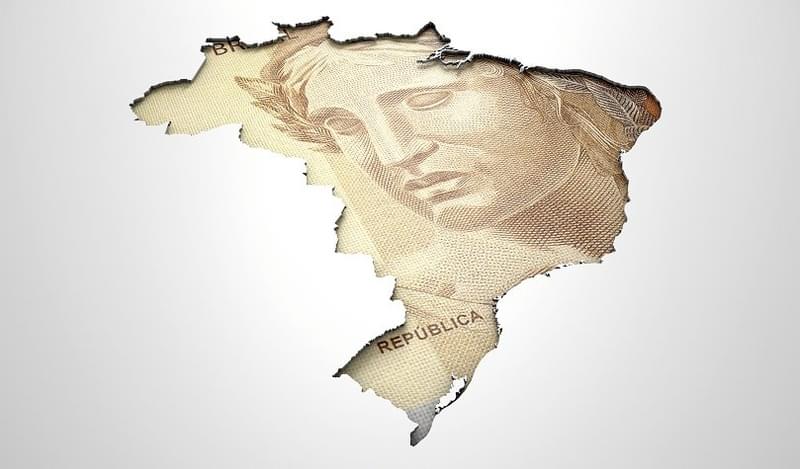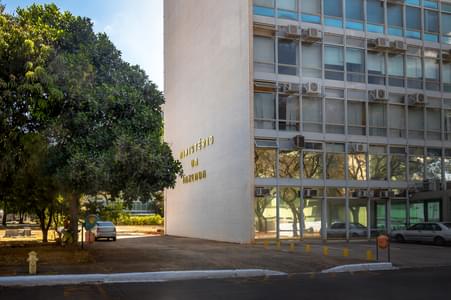What is curious in Brazil’s recent past is that investment has fallen more in the downward phase of the economic cycle than it has risen in the recovery phase, so that cumulative investment growth has lagged behind GPD growth. This situation sets Brazil apart from neighboring countries with economic cycles and economic policy regimes similar to Brazil’s, albeit with more stable macroeconomic environments, such as Chile, Peru and Colombia.
Sizing up the situation since 2000, what can be observed is that in the downward phase of the economic cycles (decelerating growth or contraction of GDP), the annual variation of investment has been 5.3% below the annual variation of GDP, while in the upward phase, the variation of investment has been 4.5% higher than the variation of GDP (based on quarterly data). In other words, investment is more sensitive to declines than to rises of the economic cycle.
For the three mentioned “orderly neighbors”, the averages are 4.8% and 7.7%, respectively. Therefore, the investment cycle is not more perilous or volatile in Brazil in comparison with these neighbors, but it is less virtuous, mainly because of the lower capacity to react during upturns in the economic cycle.
What is at issue here is not the fact that the investment rate in Brazil is low in proportion to GDP, although this is a corollary of the picture described above, but rather that its impetus is more modest in moments of economic growth. This has been the pattern even with the expansion of public investment, which increased by 17% per year on average between 2006 and 2010, an up period of the economic cycle.
It is true that the extremely high interest rates in Brazil limit investment. After all, high interest rates mean that investment projects with modest rates of return are discarded. It is important, however, to go beyond this explanation, because high interest rates are not something that can be changed by fiat. Cutting interest rates at any cost is not an option available in the economic policy toolkit.
Three additional points should be pondered. First, this investment pattern has occurred even with the substantial expansion of subsidized credit from the BNDES (11% of GDP in April 2016 versus 5.9% in December 2006) and real estate credit, also directly or indirectly subsidized (9.7% of GDP in April 2016 against 1.7% in December 2006). Granted, this result might be a reflection of mistaken design of public policies. All the same, it is noteworthy that reducing interest rates does not resolve the investment problem.
Second, breaking down the behavior of investment (gross fixed capital formation) into apparent consumption of machinery and equipment and production of construction materials reveals that the construction sector is the cause of this pattern of contracting more in the downward phase of the economic cycle than expanding in the upward phase. This pattern does not hold for consumption of machinery and equipment. This result provides further support that while high interest rates act to limit investment, this is not the only factor explaining the weakness of the investment cycle. If high interest rates had this central role, the behavior of the two groups would be more uniform.
Third, Mexico has the same asymmetry as Brazil in the reaction of investment to downward and upward phases of the economic cycle, although its interest rates are much lower (the nominal basic interest rate is 3.75% and the ex-ante real rate is 0.5%, versus 14.25% and 7.6% in Brazil, respectively) and the macroeconomic environment is more stable.
Therefore, other factors contribute must explain the weakness of the investment cycle. A natural leading candidate is the country’s institutional setting.
In Brazil, legal and regulatory insecurity is at the root of the investment weakness, mainly in infrastructure. Mexico, in turn, suffers the consequences of a weak judiciary, with low adherence to the principles of justice and enforcement of laws and regulations, besides problems of lack of public safety. This combination of factors raises informality in the country and severely restricts the credit market, reinforcing the picture of low investment vigor.
Brazil’s position in the global competitiveness rankings says a lot about the country’s fragility. In Doing Business, for example, Brazil is in the 116th position, while the “orderly neighbors” are all near 50th place.
Another element that can make a difference is the fact the Brazilian economy is very closed, meaning less incentive to investment and innovation. Taking into account not only the trade flow, which tends to be small in countries with robust internal markets, but also commercial policies, Brazil is considered to have one of the most closed economies in the world.
Even if the government succeeds in stabilizing the economy, recovery of investment will not come all that soon. The economy is marked by high idleness (the level of installed capacity utilization is 74%, in comparison to 77% during the worst part of the global crisis of 2008-09) and there is excess supply in the real estate market. Besides these aspects, the capacity for investment of the public sector, which accounts for around 18% of gross fixed capital formation, will be impaired for a long time.
The hope is that this grim reality will be a sufficient incentive to make progress on the macroeconomic agenda, which would give more capacity for investment by the private sector. The choice for increased supply of subsidized credit from the government, a usual demand of the productive sector, would be mistaken. We need to change the tune.









